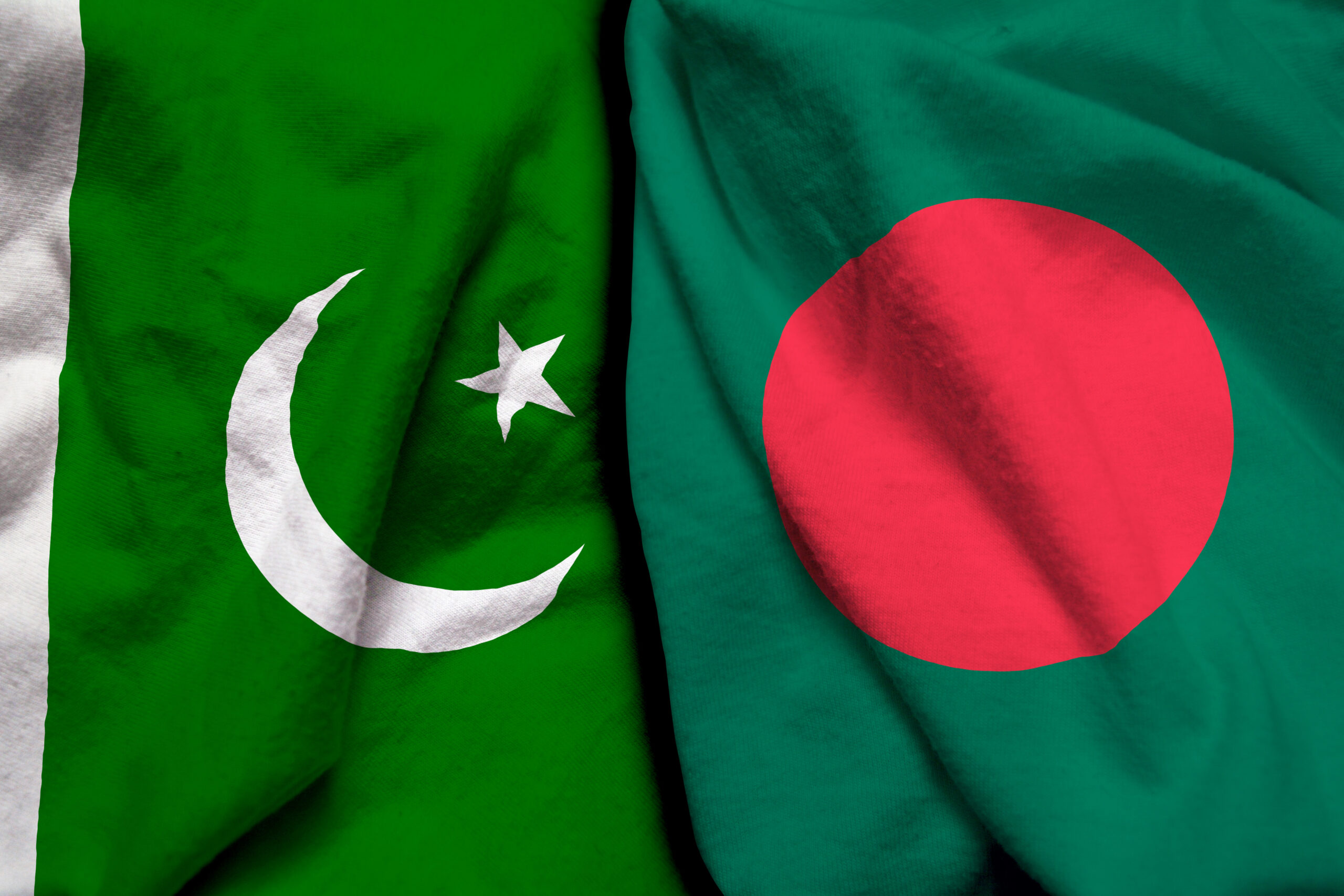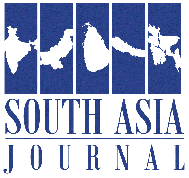
Bangladesh and Pakistan, two nations whose shared history diverged in 1971, face a transformative moment in South Asia’s rapidly shifting geopolitical landscape. Lingering mutual distrust and contested wartime narratives have long overshadowed the potential for closer ties. Yet economic recalibrations, evolving alliances with global powers such as China, and heightened regional tensions—particularly with India—offer compelling reasons for Dhaka and Islamabad to revive and deepen their relationship.
This discussion explores why Bangladesh and Pakistan would benefit from expanded trade links and more extensive military cooperation. It also highlights how a broader alignment with China, alongside possible partnerships with Middle Eastern states, might strengthen the economic and strategic outlook for both countries. Organised around four central themes—The Rationale for Economic Reintegration, Emphasising Military Collaboration: A Strategic Imperative, Overcoming Structural and Political Constraints, and Policy Recommendations for a Renewed Partnership—this article demonstrates how Dhaka and Islamabad could recalibrate South Asian power dynamics in mutually advantageous ways.
Historical Context and Divergent Paths
The legacy of 1971 left both Bangladesh and Pakistan with deep-seated grievances and unresolved diplomatic tensions. In the decades that followed, overtures at normalisation were often hindered by political pressures and the imposing presence of India on the subcontinent’s strategic chessboard. Nevertheless, contemporary conditions now encourage a more pragmatic re-examination of old hostilities.
On one hand, Bangladesh’s economy is growing, fuelled primarily by a strong garment sector and increasingly robust domestic industries. On the other, Pakistan, despite fluctuating economic fortunes, retains notable strengths in agriculture, textiles, and defence production. Both countries share concerns over India’s expanding regional clout, prompting them to seek additional security and economic partners. Reinvesting in a bilateral relationship may thus help address these strategic challenges, particularly if Bangladesh and Pakistan combine forces in ways that leverage each other’s comparative advantages and extra-regional ties.
The Rationale for Economic Reintegration
Economic collaboration between Bangladesh and Pakistan could open up new revenue streams, reduce dependency on single markets, and generate employment across critical sectors. By situating these initiatives within a broader multilateral framework that includes China and Middle Eastern actors, both countries can also enhance their regional and global profiles.
Rather than relying solely on raw textile imports from other suppliers, Bangladesh could source cotton and yarn from Pakistan to mitigate market volatility and stabilise production costs. Such a move would complement Pakistan’s strengths in cotton cultivation and spinning, while providing Pakistani producers access to Bangladesh’s established garment-export networks. Establishing industrial clusters and special economic zones dedicated to textile processing could be further bolstered by foreign direct investment, potentially from Chinese and Gulf sources, thus enhancing infrastructure and operational efficiencies.
Beyond textiles, agriculture emerges as another promising arena for collaboration. Pakistan’s surplus of wheat, pulses, and oilseeds could readily complement Bangladesh’s needs, ensuring more stable food supply lines. Conversely, Bangladesh’s coastal and aquaculture expertise—particularly in fish and shrimp—could help diversify diets in Pakistan while expanding the latter’s access to marine-based nutritional resources. Coordinated research and development into climate resilience, pest control, and sustainable farming would not only improve yields but also draw in international funding eager to support cross-border agritech innovation.
The pharmaceutical sector presents equally fertile ground for economic partnership. Bangladesh has carved out a notable niche in the production of affordable, high-quality generic medicines that could address healthcare affordability issues in Pakistan. In return, Pakistan’s varied industrial goods—including cement, leather products, and engineering components—would likely find thriving consumer markets in Bangladesh’s fast-urbanising environment. Joint ventures in renewable energy and information technology could similarly spur development by harnessing youthful talent and capitalising on broader trends toward green growth.
A broader regional pact, which Bangladesh might help champion, could integrate these bilateral undertakings into a wider framework. Such an agreement would not be limited to trade concessions but might encourage multilateral investment from China, Gulf states, and other interested partners in port development, rail connectivity, and cross-border electricity grids. Coordinated marketing of exports to global buyers would be another logical step, offering Bangladesh and Pakistan a unified brand and more competitive shipping routes.
Emphasising Military Collaboration: A Strategic Imperative
While economic cooperation can deliver immediate returns, strategic considerations involving India often drive the need for closer defence ties. Perceptions of India’s military modernisation and global reach spur both Bangladesh and Pakistan to seek greater deterrence through collective defence strategies, amplifying each other’s capacities and safeguarding shared interests.
Joint military exercises and improved operational coordination offer several benefits. Naval drills in the Bay of Bengal and beyond would reinforce maritime security against piracy or illegal trafficking, ensuring the smooth flow of critical trade. Complementary ground exercises in Bangladesh’s deltaic terrain and Pakistan’s mountainous frontier would encourage tactical adaptability and deepen mutual trust between forces. Air force collaboration, including joint training in aerial surveillance and fighter aircraft manoeuvres, would hone response capabilities in crisis situations.
Defence equipment procurement and co-production could further this strategic cooperation. Bangladesh, for instance, might consider Pakistan’s cost-effective military hardware and defence industry expertise, supplemented by technology transfers. Over time, both nations could explore co-developing patrol vessels, drones, or surveillance technologies, potentially enlisting China’s participation to accelerate research and ensure high-quality end products.
Strengthening training, education, and capacity building—in fields such as counterterrorism, cybersecurity, and peacekeeping—would enable each country to modernise its forces while fostering a sense of camaraderie and seamless collaboration. Programmes that rotate officers through each other’s military academies not only enhance professional networks but also reduce cultural barriers that might impede joint operations.
Among the more robust proposals for deterring perceived threats from India, Bangladesh could establish joint military bases with Pakistan and China along the India–Bangladesh border. These installations, which might include air bases equipped with advanced radar and surveillance systems, would function as both a deterrent and a strategic foothold. Access to Chinese technical and financial support could expedite base construction and equip them with modern infrastructure, aligning the interests of Dhaka, Islamabad, and Beijing. Although diplomatically sensitive—especially from India’s perspective—such bases signal the seriousness of shared security concerns and reflect a conscious effort to balance regional power structures.
Overcoming Structural and Political Constraints
The benefits of closer Bangladesh–Pakistan cooperation do not diminish the obstacles that stand in the way of this vision. Geographic separation, for instance, forces the two nations to depend on often costly maritime or air corridors, given India’s geographical centrality. In the economic realm, upgrading ports, modernising customs procedures, and enhancing digital connectivity could mitigate these barriers, and inviting external investment from China or the Middle East might facilitate rapid improvements.
Historical mistrust, especially the unresolved legacies of 1971, is another formidable challenge. Political leaders and civil society activists in both countries remain sensitive to issues such as alleged war crimes and the perceived need for reparations. Creating neutral forums for dialogue, enabling cultural exchanges that humanise “the other,” and cultivating media narratives that accentuate common interests rather than perpetuating past animosities can help tackle these emotional residues.
Regional power dynamics also complicate the prospect of deeper Bangladesh–Pakistan engagement. India’s response to the creation of joint military bases or any perceived alignment with China could be guarded or even hostile. To pre-empt misunderstandings, Bangladesh and Pakistan might engage India through back channels or multilateral frameworks like the South Asian Association for Regional Cooperation (SAARC), emphasising that joint military initiatives serve a defensive, stabilising purpose. Similar efforts in courting Sri Lanka, Nepal, and Bhutan could solidify a broader regional consensus that any new defence or economic agreements benefit South Asian prosperity.
Policy Recommendations for a Renewed Partnership
A carefully structured approach can help Bangladesh and Pakistan maximise the advantages of collaboration while minimising potential fallout. Formalising economic ties through preferential trade arrangements or a free trade agreement should be the first priority, particularly targeting critical sectors like textiles, agriculture, and pharmaceuticals. To complement these treaties, developing special economic zones that attract Chinese and Middle Eastern investment and orchestrating roadshows in financial hubs—such as Dubai or Shanghai—would further deepen economic links.
On the defence front, designing a comprehensive cooperation pact to govern joint exercises, technology transfers, and shared maintenance facilities would systematically embed military collaboration. Pooling resources for defence procurement, especially in partnership with China, could yield advanced capabilities more cost-effectively than operating independently. Enhanced officer exchange programmes and training for UN peacekeeping operations would reinforce the professional bonds necessary for long-term stability.
Establishing joint military bases—particularly in sensitive border areas—carries significant diplomatic risks. Nonetheless, if carefully managed, these installations can bolster deterrence, strengthen air defence, and solidify Bangladesh’s strategic relationships with both Pakistan and China. Publicly framing their purpose around collective security and environmental disaster relief, while acknowledging legitimate Indian concerns in regional discussions, might help mitigate tensions.
It is equally crucial to address structural and political bottlenecks directly. A standing bilateral commission of policymakers, business representatives, and defence experts can provide continuity, transparency, and mutual accountability. Public outreach through student exchange, film festivals, and interfaith tourism would give ordinary citizens opportunities to experience the tangible benefits of cooperation. Confidence-building measures with India, though challenging, remain indispensable; this could involve reciprocal information-sharing on border security or increased participation in SAARC-led economic dialogues.
The evolving geopolitical realities of South Asia create a powerful incentive for Bangladesh and Pakistan to revise their historically fraught relationship. Heightened tensions with India, shifting global supply chains, and the allure of large-scale Chinese and Middle Eastern investment converge to make a renewed bilateral partnership both timely and beneficial. Economic integration—in textiles, agriculture, pharmaceuticals, and emerging technology—offers a chance to generate growth and employment, while a stronger military alignment can ease security anxieties and enhance strategic autonomy.
Yet reconciliation cannot be achieved without carefully managing the historical and diplomatic frictions that have long stymied progress. By emphasising shared interests, engaging in transparent dialogue with regional stakeholders, and cultivating joint defence structures in tandem with external powers such as China, Bangladesh and Pakistan may transform their bilateral equation. For Dhaka in particular, diversifying strategic partnerships and reducing reliance on any single external power can fortify its position in an increasingly polarised neighbourhood.
If leaders from both capitals demonstrate sustained commitment, a recalibrated Bangladesh–Pakistan relationship could yield new sources of stability and prosperity, both for themselves and for the broader South Asian region. This future, shaped by strategic foresight, economic pragmatism, and a willingness to address past grievances, holds the promise of a partnership that not only endures but ultimately thrives in an interconnected world.
